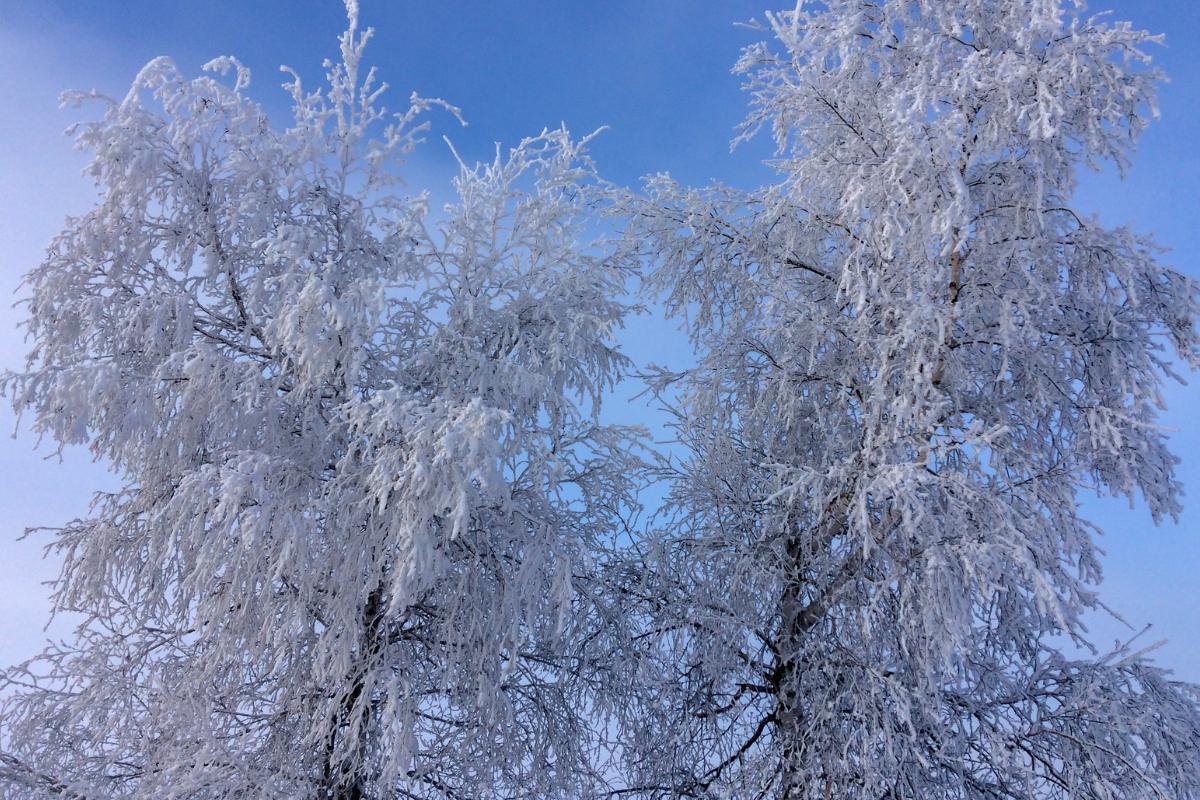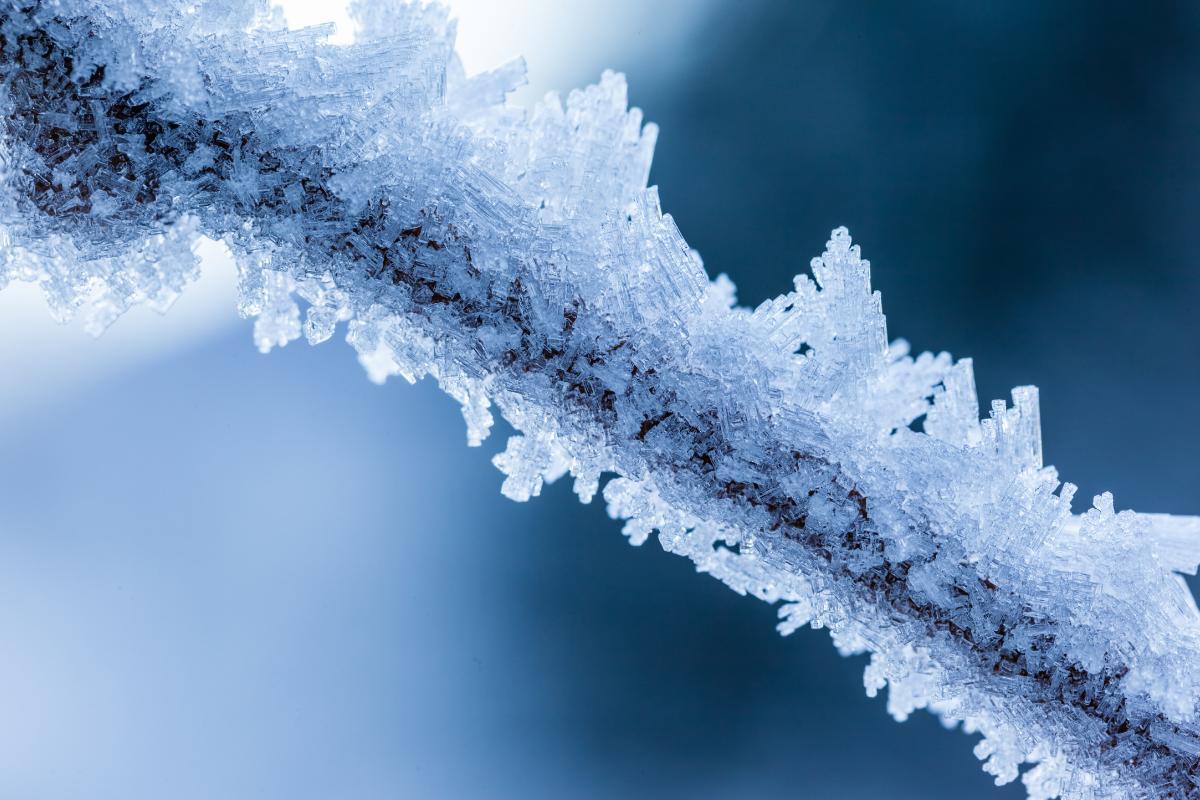What Is Rime Ice and How Is It Formed?


Rime ice is a meteorological phenomenon that is defined as the direct formation of a layer of ice on exposed surfaces such as tree branches, leaves and grass. It occurs due to the freezing of water vapor in the air. This process is influenced by specific atmospheric conditions of humidity and near-freezing temperatures. When it occurs, it gives rise to delicate and complex visual patterns.
There are many people who are interested in knowing more about this cold weather phenomenon. This is why thedailyECO asks what is rime ice and why is it formed? In addition to learning about its formation, we discover the different types of rime ice that can be found.
What is rime ice?
Rime ice is a meteorological phenomenon that occurs under specific conditions of temperature and humidity. The process of riming is the formation of a layer of ice on exposed surfaces due to the freezing of water vapor present in the air. Said surfaces are often trees, plants and other organic objects, but it can develop on inorganic objects too.
This phenomenon occurs in environments with high relative humidity and temperatures close to the freezing point. When the ambient temperature is low enough, water vapor in the air condenses directly into ice on the aforementioned surfaces, creating a thin layer of ice. Although visually similar to frost, rime ice is distinguished by its formation from the direct deposition of ice without passing through the liquid phase. This is a process known as deposition.
The deposition process is more common in rural environments and natural landscapes where exposed surfaces allow ice to accumulate more easily. In addition, rime ice can give rise to picturesque landscapes, transforming the appearance of natural elements by covering them with delicate layers of ice. Although rime ice can offer impressive visual scenes, it can also present a challenge to mobility and safety as the affected surfaces can become slippery.
Learn more about wintry weather conditions with our article on the different types of snow.

How is rime ice formed?
The formation of the rime ice involves a specific combination of meteorological factors. First, an atmosphere with a significant amount of water vapor is required. This vapor can come from various sources, such as evaporation from nearby bodies of water, plant transpiration or even soil moisture.
The next key condition for riming to occur is the ambient temperature. Rime ice generally occurs in conditions near the freezing point of water, which is 0 degrees Celsius or 34 degrees Fahrenheit. Under these circumstances, water vapor in the air cools enough to move from the gas phase to the solid phase, directly forming small ice crystals on exposed surfaces.
The presence of surfaces on which ice crystals can settle is also essential. Tree branches, leaves, grass and other outdoor objects serve as anchor points for ice crystals to accumulate and create the characteristic rime ice layer. The way these crystals are distributed and grouped together depends on wind direction and other local factors.
The rime ice is distinguished from other similar phenomena by the fact that ice crystals are formed directly by the condensation of water vapor on the surface, without passing through the liquid phase. This deposition process can result in the creation of intricate and delicate patterns, often giving the rime ice a unique visual appearance.
Types of rime ice
Although the term rime ice is commonly used to describe the general phenomenon of ice formation on exposed surfaces, variations in the appearance and intensity of this phenomenon may be observed depending on specific atmospheric conditions. Let's see what are the main types of rime ice that exist, although it is important to remember there is no strict official classification of this phenomenon:
- Mild rime ice: occurs in humid conditions and temperatures close to freezing, but may not be as visible or extensive. Although ice crystals form, they may not completely cover surfaces and the resulting layer may be thinner.
- Dense rime ice: in more favorable atmospheric conditions, the rime ice can be more intense, creating thicker and more extensive ice layers. This usually occurs in environments where humidity is considerable and the temperature is just below freezing.
- Radial rime ice: sometimes ice crystals can form in a more organized manner, creating radial patterns on affected surfaces. This type of rime ice can give tree branches or leaves a particularly picturesque appearance.
- Spiny rime ice: under special conditions, rime ice can form ice crystals with more pointed edges, giving them a prickly appearance. This usually occurs when ice crystals build up on smaller, sharper objects, such as grass or bushes.
- Tangled rime ice: in areas with variable winds, rime ice can form in a tangled and disorderly manner. This results in more chaotic patterns and interlocking ice forms, especially when atmospheric conditions change rapidly.
Riming is also a process that is involved in other weather phenomena that are not characterized as rime ice. You can learn about one of them with our article on how snow pellets are formed.

Differences between rime ice and frost
Although riming and the formation of hoarfrost share similarities in the formation of ice on exposed surfaces, there are key differences between these two weather phenomena. They are:
- Formation: rime ice is formed directly by the freezing of water vapor present in the air. Ice crystals settle on exposed surfaces without passing through the liquid phase. Frost forms when water vapor in the air condenses into liquid droplets on surfaces and then these droplets freeze to create a layer of ice.
- Temperature: rime ice occurs in near-freezing conditions, usually with temperatures slightly below zero degrees Celsius. On the other hand, frost can form at lower temperatures than ice, even in more intense freezing conditions.
- Visual appearance: rime ice tends to form more intricate and delicate patterns. Ice crystals deposit more directly and can create finer, more complex structures. In the case of frost, it usually has a thicker and more uniform appearance. The resulting ice sheet may be more robust and less elaborate compared to the ice sheet.
Now that you know what is rime ice and how its formed, you can find out more about other freezing cold weather conditions with our article on what is a glacial moraine and how do icicles form?
If you want to read similar articles to What Is Rime Ice and How Is It Formed?, we recommend you visit our Meteorological phenomena category.







